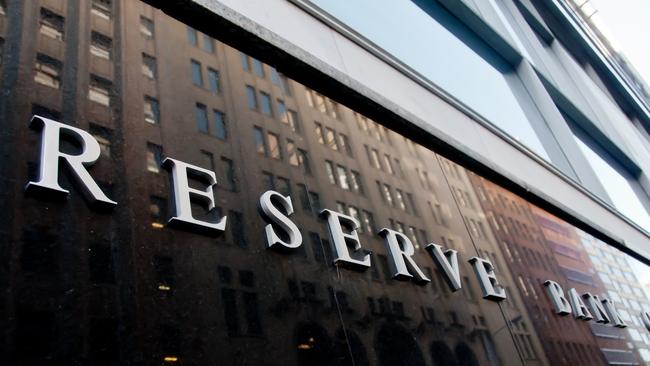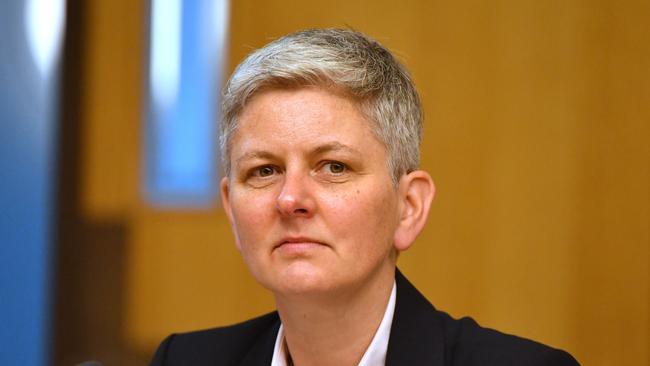RBA assistant governor says demand, not supply causing house price boom
Lifting supply won’t fix soaring house prices, says senior RBA figure, while raising concerns over impact of negative gearing on financial stability.

A Reserve Bank of Australia official has hit back at suggestions that skyrocketing Australian home prices are attributable to restrictive zoning laws, telling a parliamentary committee the record cost of housing is linked primarily to increasing demand.
RBA assistant governor Luci Ellis also said on Tuesday that the central bank remains “quite concerned” that housing tax concessions like negative gearing and the capital gains tax exemption are having a speculative effect on the market, impacting financial stability.
But the committee also heard alternate views from representatives of the Treasury, who said the house price problem wasn’t as acute when loan serviceability was examined as opposed to the sticker price on a new property.
Australian house prices have shot up since the country emerged from the first round of Covid-19 pandemic lockdowns, lifting 15.8 per cent in the last year and sparking renewed concerns about housing affordability.
Dr Ellis told the House of Representatives tax and revenue committee's probe into housing affordability and supply that the recent price surge was primarily due to the same factors that have seen prices increase since the 1980s – the increasing affordability of credit, culminating in today’s record low interest rates.
“Essentially, people’s capacity to pay has increased,” she said.
“It doesn’t matter how flexible your construction sector is, it doesn’t matter how liberal your zoning laws are, supply curves will always slope up and prices will rise in the face of an increase in demand.”
“The question is how much, and whether that’s too much.”
Dr Ellis wrestled with committee chair Liberal MP Jason Falinski over the impact housing supply has had on current prices, arguing it was “very hard” to make the claim there was a current undersupply of dwellings.
She pointed to an apartment boom in the last few years and the “significant number” of new detached dwellings built due to the government’s recent HomeBuilder program, while adding that simply making it easier for people to borrow would only exacerbate current problems.

“You don’t increase affordability by giving people more money to spend on housing. All that does is bid up prices,” she said.
“You certainly don’t improve people’s welfare by making it easier for people to borrow more and more.
“Just building more homes will not bring down prices a lot, but it does matter.”
Dr Ellis urged the government to look at the problem “holistically,” including at the way the housing market is taxed at the impact it has on speculative activity.
“The bank has always held the view that the combination of negative gearing and concessional capital gains tax and indeed, the way we tax older Australians – or don’t tax older Australians – combine to encourage essentially speculative investment in property,” she said.
“There are positives and negatives to that. It probably means that at the margin rents are lower for some households who rent, but it does add a speculative dynamic to the market.
“That is something that we’re quite concerned about given our financial stability mandate.”
Earlier, the committee heard from Treasury representatives who told the committee that even though an average Australian home now costs around six times an average income compared to around two and a half 30 years ago, a record low cash rate of 0.1 per cent meant the ability of many Australians to service their debt has not changed.
“With interest rates being lower debt serviceability is sort of similar,” Treasury macroeconomics conditions unit director Crystal Ossolinksi said, adding that saving for a deposit was now the challenge for most home buyers
“Over the long run, we’re kind of sitting roughly where we were back in the 90s in terms of actual debt serviceability, the bit has changed is the deposit hurdle so as prices have gone up, you have had to save more in order to hit that 20 per cent.”
Ms Ossolinksi also said that although demand factors were driving up prices, supply was also important - and with interest rates projected not to fall over the next few years as a record number of home approvals flow through into new dwellings, house price growth should ease.
Treasury also played down the impact of negative gearing and other tax concessions in driving up prices through investor activity, with health, disability and social services branch assistant secretary John Swieringa saying the steepest house price growth was seen well after they were put in place.
“We probably don’t view those sort of structural tax settings as being sort of an immediate driver of price growth, I mean those settings have been relatively unchanged since I think 1999 was when they moved from indexation to the capital gains tax discount,” he said.
“If anything owner occupiers have more concessional tax treatment than investors in the sense there is no capital gains tax on owner occupier dwellings.”



To join the conversation, please log in. Don't have an account? Register
Join the conversation, you are commenting as Logout